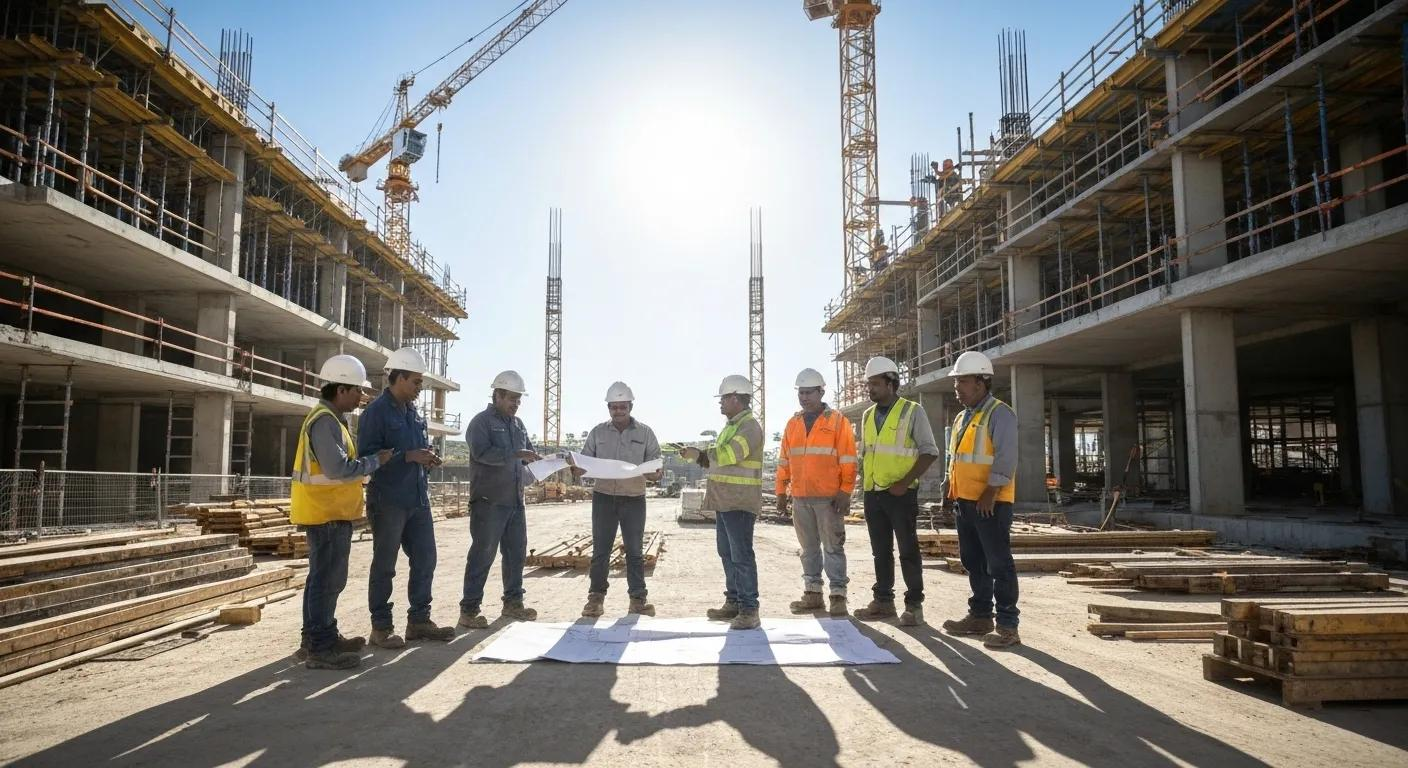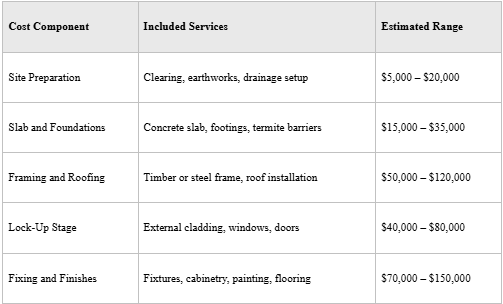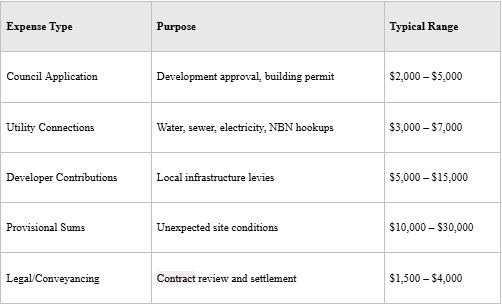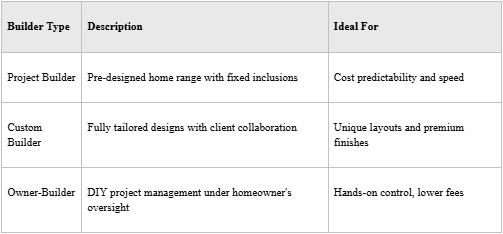Building a new house in Queensland represents an exciting opportunity to secure a custom home perfectly suited to your lifestyle and climate. Yet navigating budgets, regulations, and design choices can overwhelm any homeowner. In this guide, Livit Construction draws on local expertise to clarify costs and financing, explain builder selection, detail each construction phase, unpack legal requirements, guide land and package choices, and reveal design and sustainability strategies. Whether you're a first-time buyer seeking grant support or a seasoned homeowner aiming for energy-efficient living, this article equips you with actionable insights for a confident build in Queensland.
Building a house in Queensland involves understanding baseline expenses, variable factors, government incentives, financing solutions, and hidden fees. Defining overall budgets and tapping into grants early streamlines decision-making and reduces financial surprises.

Average costs to build new homes in Queensland start from $3,000 to $5,500 per square metre in Greater Brisbane, translating to approximately $450,806 total for a typical 226 sqm home. These figures reflect labor, materials, and basic finishes, ensuring transparency before selecting custom upgrades or premium features.
To illustrate core cost components, consider the following breakdown:

These component ranges reveal where budgets concentrate, guiding homeowners toward cost-effective design choices while preparing for premium selections in subsequent phases.
Recent industry research indicates that the cost to build a new house in Brisbane typically ranges from $3,000 to $5,500 per square metre. For an average Queensland new house size of 226.1 sqm, this translates to a total cost between approximately $633,080 and $1,119,195, with the Australian Bureau of Statistics reporting an average cost of $450,806 for a home in Queensland.
Several variables cause total building costs to fluctuate significantly: location, design complexity, material quality, site conditions, and builder selection. Coastal suburbs typically incur higher transport and flood-risk mitigation charges, while acreage blocks require specialised site works for slope and soil stability.
Understanding these determinants empowers homeowners to balance aesthetics, functionality, and value throughout planning and tender stages.
The Queensland First Home Owner Grant (FHOG) offers eligible buyers $30,000 toward new home construction contracts signed by June 30, 2026, reverting to $15,000 thereafter. This grant applies to homes valued under $750,000 and directly lowers deposit requirements, enhancing affordability for first-time buyers in key growth corridors.
Leveraging FHOG funds early can reduce mortgage principal, improve cash flow during construction, and accelerate progress toward handover.
The Queensland First Home Owner Grant offers eligible first-time home buyers $30,000 towards buying or building a new home in Queensland for contracts signed between 20 November 2023 and 30 June 2026. After this period, the grant amount is set to revert to $15,000. The grant applies to new homes valued at less than $750,000.
Securing the right financing structure ensures steady cash flow across the construction timeline. Common solutions include:
By coordinating loan draws with slab pour, lock-up, and fixing phases, homeowners minimise interest costs and maintain budget discipline throughout their Livit Construction journey.
Beyond core build costs, homeowners should plan for ancillary charges such as council application fees, utility connections, developer levies, provisional sums for site works, and solicitor or conveyancer expenses. Failing to account for these can delay approval or inflate budgets post-contract.

Accounting for these fees during pre-construction prevents financial shockwaves, allowing the homeowner to proceed with confidence into the next section on selecting a builder.

Selecting a reputable builder sets the foundation for quality, compliance, and seamless communication. Understanding builder types, vetting procedures, and Livit Construction's unique value promise ensures a stress-free build.
Homebuilders in Queensland typically fall into three categories: project builders, custom builders, and owner-builders. Each offers distinct pathways:

Understanding these options guides homeowners toward the model that best matches their design aspirations, budget limits, and desired commitment level.
Verifying a licensed builder protects homeowners from substandard work and legal disputes. Key vetting steps include:
A thorough vetting process bolsters homeowner confidence and underpins a transparent working relationship with builders like Livit Construction.
Livit Construction combines local regulation expertise, streamlined communication, and unwavering quality to deliver custom and house-and-land package homes across Brisbane, the Gold Coast, and the Sunshine Coast. Our proprietary consultation methodology clarifies budgets and speeds approvals, while personalised service fosters ongoing trust and transparency. By choosing Livit Construction, homeowners gain a dedicated partner committed to on-time handover, superior craftsmanship, and tailored design solutions for Queensland living.
Continuing from selecting the right builder flows into the structured home building process that ensures every stage aligns with expectations.
A clear roadmap from land acquisition through handover empowers homeowners to track progress, manage costs, and ensure regulatory compliance at each phase of their build with Livit Construction.
Pre-construction involves land selection, design development, planning approvals, and contract finalisation. This phase defines the project scope by locking in site suitability, concept plans, engineering reports, and a fixed-price building contract. Early engagement with surveyors, architects, and local council expedites approvals and sets accurate timeframes for construction commencement.
Construction unfolds through six primary stages, each requiring specific inspections and homeowner decisions:
This structured progression ensures predictable timelines and budget adherence as Livit Construction navigates each milestone on your behalf.
At handover, homeowners receive a comprehensive inspection report, operational manuals, and warranty documentation. We guide you through appliance operation, maintenance schedules, and defects liability coverage.
Post-construction benefits include a six-year structural warranty, a twelve-month maintenance period, and ongoing support for any concerns that arise after keys are handed over.
With these assurances in place, new homeowners can settle into their Queensland residence confidently.
Compliance with statutory frameworks protects homeowners and builders by ensuring safety, durability, and environmental performance across all new home builds.
The Queensland Building Act 1975 establishes licensing requirements, inspection regimes, and dispute-resolution protocols, while the NCC 2022 enforces minimum standards for structural integrity, fire safety, plumbing, and energy efficiency. New home projects must align with Modern Homes provisions like liveable design from October 1 2023 and updated energy ratings from May 1 2024, to qualify for performance certificates and lender approval.
The National Construction Code (NCC) 2022, given legal effect by Queensland's Building Act 1975, sets minimum standards for building design and construction. Key updates include the "Modern Homes" provisions for liveable housing design, which commenced on 1 October 2023, and updated energy efficiency requirements, including a 7-star NatHERS rating, which came into effect on 1 May 2024. Additionally, the Queensland Building and Construction Commission (QBCC) mandates licensing for building work over $3,300 and provides consumer protections such as home warranty insurance and dispute resolution services.
Securing a Development Approval (DA) and a Building Permit (BP) from local council involves submitting site plans, soil reports, engineering certification, and building designs. Typical timelines span 4–8 weeks for DA and 2–4 weeks for BP, depending on complexity and regional planning overlays. Early engagement with Livit Construction's approvals team accelerates these processes, reducing the risk of delays.
QBCC and HIA contracts both outline builder obligations, payment schedules, and dispute-resolution pathways, but they differ in standard terms:

Builders must hold a current QBCC licence specific to the work category and value. Mandatory consumer safeguards include defect liability periods, statutory home warranty insurance for projects over $3,300, and the QBCC's dispute-resolution service. Understanding these protections ensures homeowners have recourse in rare events of non-compliance or workmanship issues.
Choosing the right site and package simplifies timelines, controls costs, and aligns designs with local council requirements, all while leveraging Livit Construction's curated land bank and package options.
Optimal blocks balance soil quality, slope, flood risk, orientation, and zoning. Conducting a geotechnical survey for soil classifications, checking flood maps for water-course proximity, and understanding planning overlays for height restrictions or heritage controls prevents costly surprises during pre-construction.
House and land packages bundle land acquisition, design, and build under a single contract, offering:
These advantages suit buyers seeking quick turnarounds without compromising design or quality standards set by Livit Construction.
Before signing, confirm:
These checks minimise risk and ensure your new home sits comfortably within its environment while delivering long-term value.
Designing for Queensland's subtropical climate and lifestyle blends aesthetic appeal with functional features that enhance comfort, energy efficiency, and resale value.
Queensland homeowners typically prefer single-storey open-plan layouts for indoor-outdoor flow, double-storey family homes with separate living zones, and acreage homesteads capitalising on rural vistas. Architectural details often include wide eaves, verandahs, and high ceilings to promote natural cooling and shade.
Inclusion and upgrade decisions shape liveability and efficiency. Key options include:
Choosing Livit Construction's inclusion packages ensures design coherence, cost guarantees, and streamlined procurement processes.
Sustainable homes comply with NCC Modern Homes provisions while delivering long-term savings. Strategies include:
By embedding these measures into early designs, homeowners achieve comfort and reduced utility bills, laying the groundwork for the final topic on common building questions.
Answering frequently raised concerns equips homeowners with clarity on timelines, incentives, regulations, and rights bridging knowledge gaps and reinforcing confidence in their build decisions.
Construction timelines vary by project scope but generally span 24–30 weeks from slab pour to practical completion. Site complexity, council approval durations, and weather disruptions can extend schedules, making early planning and contingency buffers essential.
Beyond the FHOG, first home buyers may qualify for:
Combining these incentives can significantly reduce out-of-pocket costs and accelerate deposit achievement.
Building regulations enforce structural integrity, fire safety, plumbing standards, and energy performance. They shape design parameters such as minimum ceiling heights, insulation levels, and site-drainage requirements to ensure new homes meet safety, durability, and environmental objectives.
Contract selection determines payment terms, scope of work, and dispute-resolution mechanisms. Understanding retention clauses, provisional sum allocations, variation processes, and home warranty insurance provisions empowers homeowners to negotiate terms that protect their interests and maintain project momentum.
Consolidating these insights completes your knowledge foundation, enabling a well-informed, confident approach to building a new house in Queensland with Livit Construction.
When you're ready to transform your vision into reality, Livit Construction stands ready to partner with you, ensuring expert guidance, transparent communication, and a seamless path from concept to keys. Contact us today to schedule your personalised consultation and embark on a stress-free building journey tailored to Queensland living.